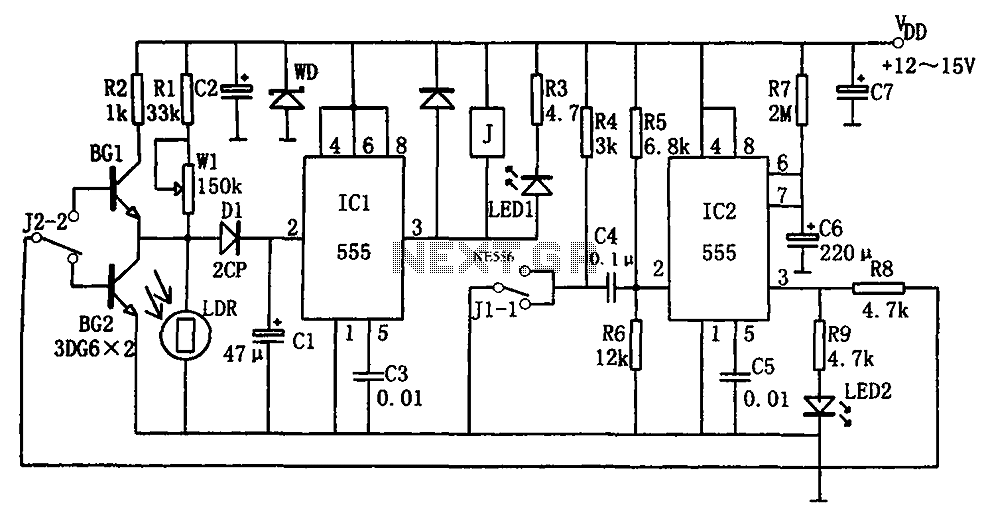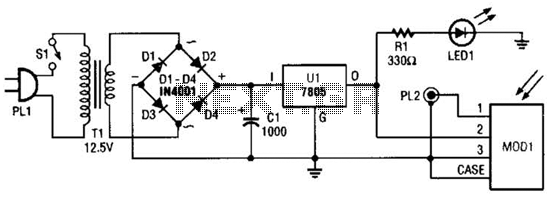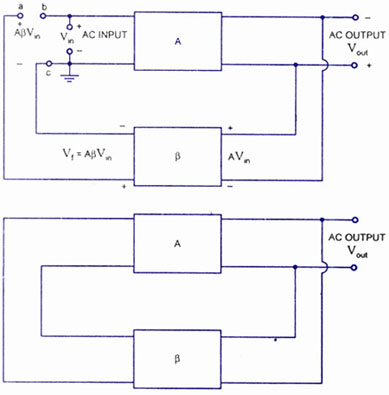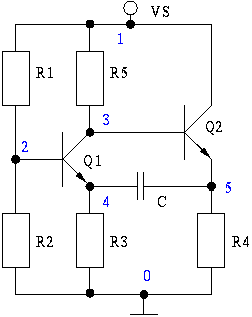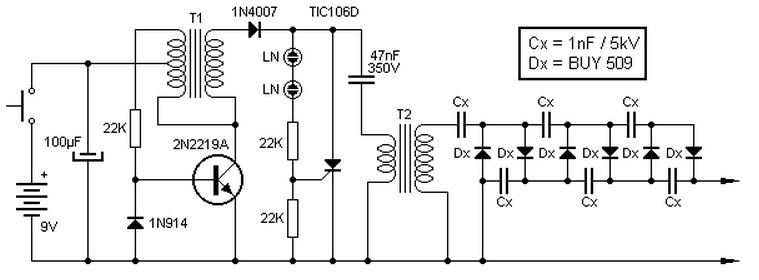
The resonant converter schematic diagram based on step-down circuit (series)

In a commonly used switching stabilized voltage supply, a resonant switch can be utilized to replace the shape of a step-down converter, resulting in a resonant converter circuit. The diagram illustrates the transformation from a step-down converter to a resonant converter: diagram (a) represents a current resonant converter, while diagram (b) depicts a voltage resonant converter.
The resonant converter circuit offers several advantages over traditional step-down converters, primarily due to its ability to operate at higher efficiencies and lower electromagnetic interference (EMI). In a current resonant converter, the energy transfer is optimized by allowing the inductor and capacitor to resonate at a specific frequency, which minimizes switching losses. This is achieved by controlling the timing of the switch operation to coincide with the zero-voltage switching (ZVS) or zero-current switching (ZCS) conditions, thereby reducing stress on the switching devices and improving overall performance.
In contrast, the voltage resonant converter focuses on maintaining a constant output voltage by utilizing resonant elements to shape the output waveform. This configuration also benefits from reduced switching losses and enhanced efficiency, making it suitable for applications requiring stable voltage regulation.
Both current and voltage resonant converters can be implemented in various applications, including power supplies for telecommunications, industrial equipment, and renewable energy systems. The choice between the two types depends on the specific requirements of the application, such as load characteristics, desired efficiency, and output voltage stability.
The schematic representation of these converters typically includes a switch, resonant inductor, resonant capacitor, and output rectifier. The switch, often a MOSFET or IGBT, is controlled by a pulse-width modulation (PWM) signal that dictates the duty cycle and frequency of operation. The resonant inductor and capacitor form a resonant tank circuit that determines the resonant frequency, which should be tuned to match the switching frequency for optimal performance. The output rectifier converts the resonant AC waveform back into a stable DC output, which can then be filtered to smooth any ripples.
Overall, the resonant converter circuit is a sophisticated solution for modern power supply design, providing enhanced efficiency, reduced EMI, and improved thermal performance compared to traditional step-down converters.In the generalused switching stabilized voltage supply, it can use theresonantswitch to replace the step-down convertor`s shape, and that is the resonant converter circuit. The diagram shows the example of changing step-down convertor to resonant converter: diagram (a) is current resonant ; diagram (b) is voltage resonant..
🔗 External reference
The resonant converter circuit offers several advantages over traditional step-down converters, primarily due to its ability to operate at higher efficiencies and lower electromagnetic interference (EMI). In a current resonant converter, the energy transfer is optimized by allowing the inductor and capacitor to resonate at a specific frequency, which minimizes switching losses. This is achieved by controlling the timing of the switch operation to coincide with the zero-voltage switching (ZVS) or zero-current switching (ZCS) conditions, thereby reducing stress on the switching devices and improving overall performance.
In contrast, the voltage resonant converter focuses on maintaining a constant output voltage by utilizing resonant elements to shape the output waveform. This configuration also benefits from reduced switching losses and enhanced efficiency, making it suitable for applications requiring stable voltage regulation.
Both current and voltage resonant converters can be implemented in various applications, including power supplies for telecommunications, industrial equipment, and renewable energy systems. The choice between the two types depends on the specific requirements of the application, such as load characteristics, desired efficiency, and output voltage stability.
The schematic representation of these converters typically includes a switch, resonant inductor, resonant capacitor, and output rectifier. The switch, often a MOSFET or IGBT, is controlled by a pulse-width modulation (PWM) signal that dictates the duty cycle and frequency of operation. The resonant inductor and capacitor form a resonant tank circuit that determines the resonant frequency, which should be tuned to match the switching frequency for optimal performance. The output rectifier converts the resonant AC waveform back into a stable DC output, which can then be filtered to smooth any ripples.
Overall, the resonant converter circuit is a sophisticated solution for modern power supply design, providing enhanced efficiency, reduced EMI, and improved thermal performance compared to traditional step-down converters.In the generalused switching stabilized voltage supply, it can use theresonantswitch to replace the step-down convertor`s shape, and that is the resonant converter circuit. The diagram shows the example of changing step-down convertor to resonant converter: diagram (a) is current resonant ; diagram (b) is voltage resonant..
🔗 External reference

